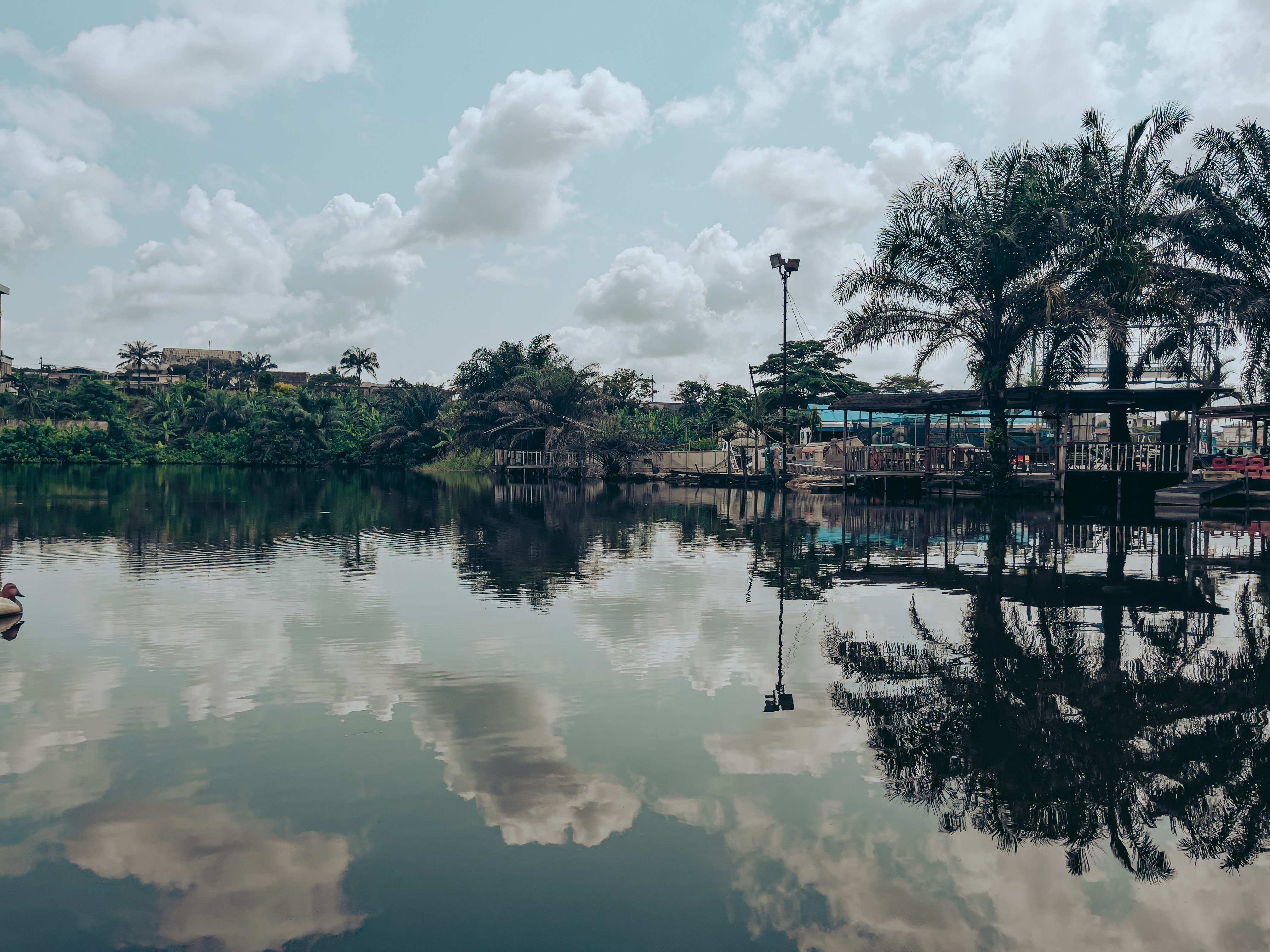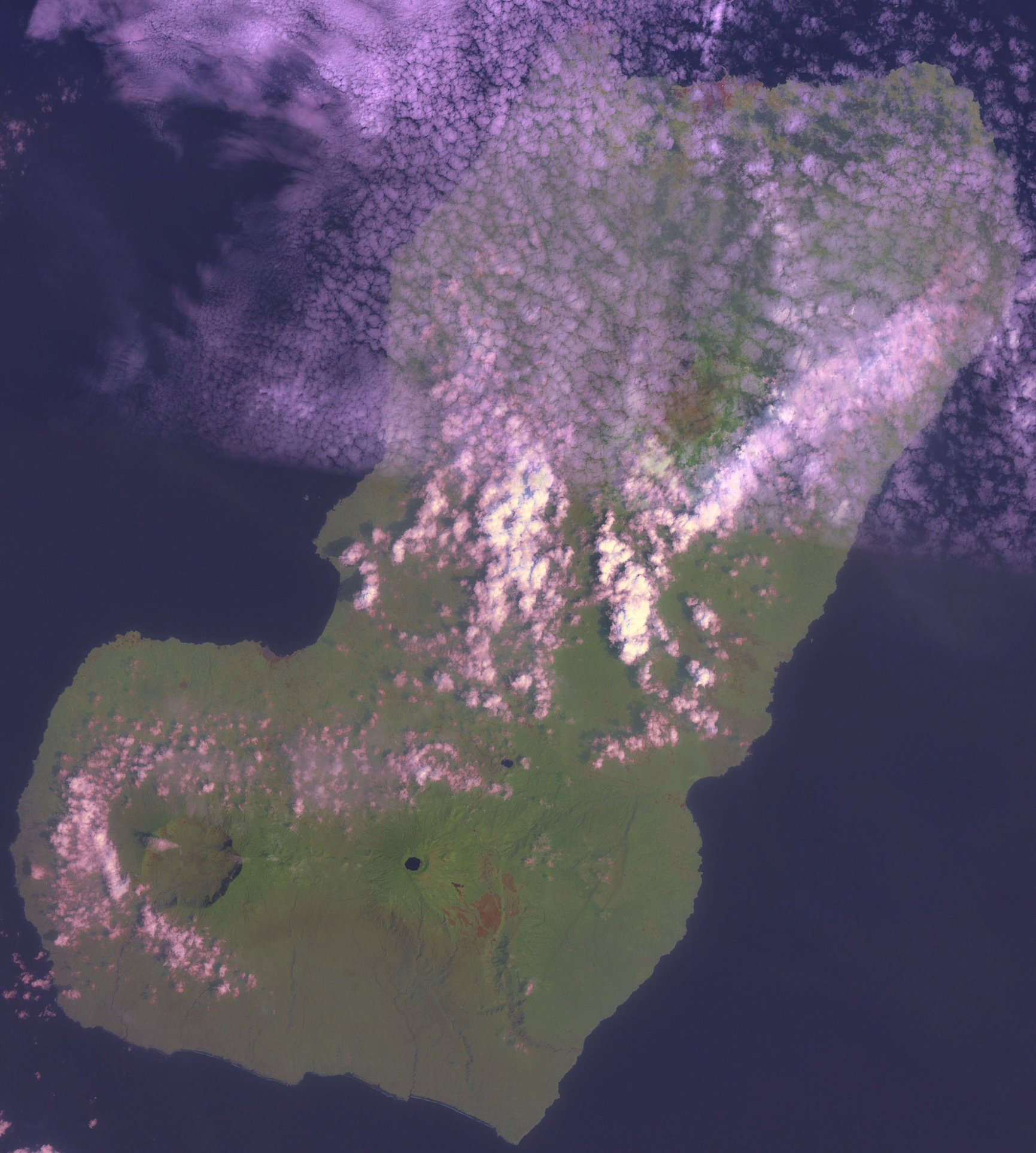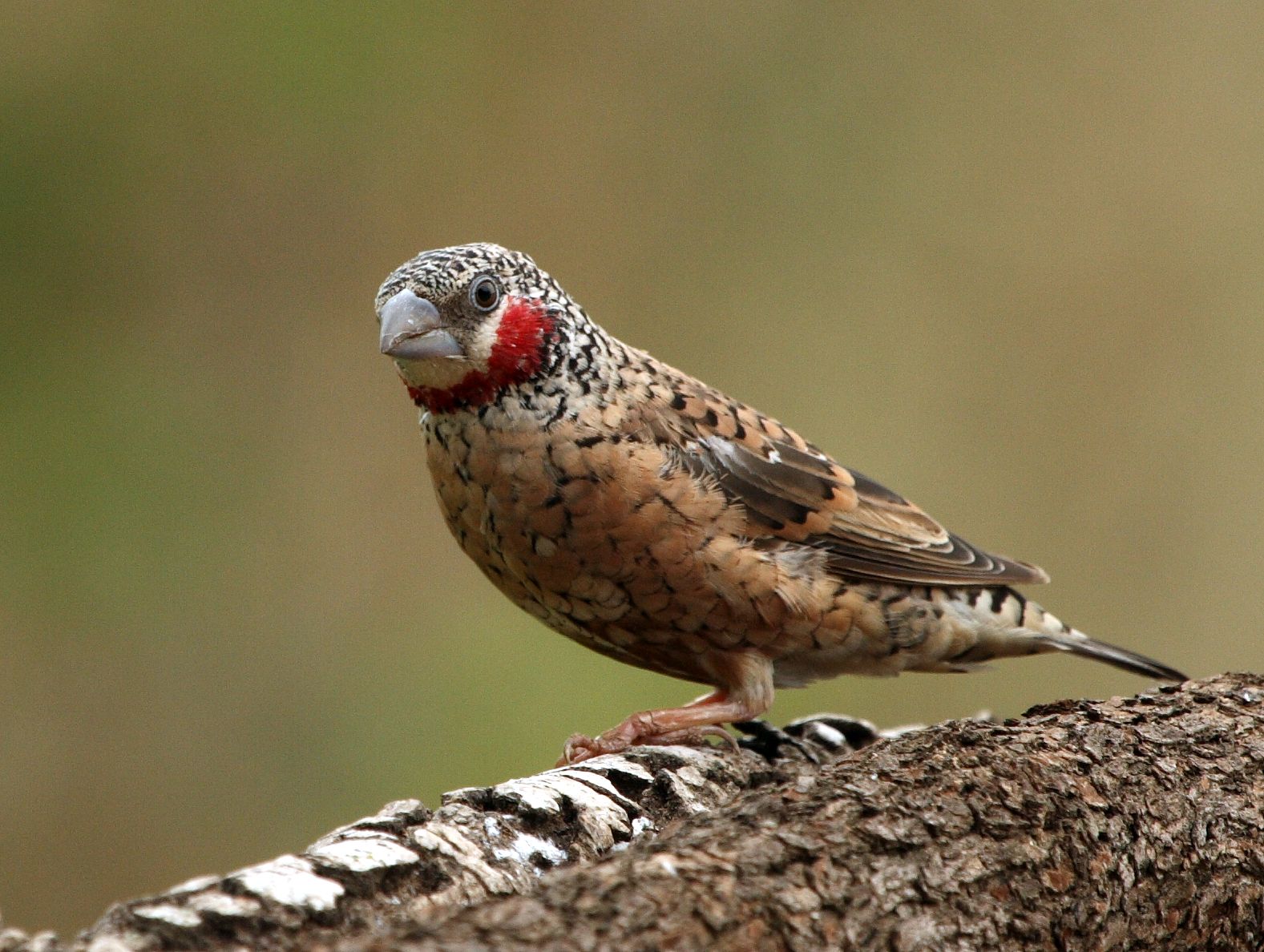|
Black And White Mannikin
The black-and-white mannikin (''Spermestes bicolor'') also black-and-white munia or red-backed mannikin, is a species of estrildid finch, widely occurring throughout the African tropical rainforest. It has an estimated global extent of occurrence of . It is found in moist savanna and subtropical or tropical moist lowland forest habitat. The status of the species is evaluated as least concern. They are seedeaters, but are known to feed on algae. The black-and-white mannikin was formally described in 1843 by the British zoologist and collector Louis Fraser from a specimen collected near Cape Palmas in Liberia. He placed the species in the genus ''Amadina'' and coined the binomial name ''Amadina bicolor''. The black-and-white mannikin is now one of the four species placed in the genus ''Spermestes'' that was introduced in 1837 by William Swainson. Four subspecies are recognised: * ''S. b. bicolor'' (Fraser, 1843) – Guinea-Bissau to Cameroon * ''S. b. poensis'' (Fraser, 1843) – ... [...More Info...] [...Related Items...] OR: [Wikipedia] [Google] [Baidu] [Amazon] |
Douala
Douala is the largest city in Cameroon and its economic capital. It is also the capital of Cameroon's Littoral Region (Cameroon), Littoral Region. It was home to Central Africa's largest port, now being replaced by Kribi port. It has the country’s major international airport, Douala International Airport (DLA). It is the commercial and economic capital of Cameroon and the entire Economic Community of Central African States, CEMAC region comprising Gabon, Congo, Chad, Equatorial Guinea, Central African Republic and Cameroon. Consequently, it handles most of the country's major exports, such as Petroleum, oil, Cocoa bean, cocoa and coffee, timber, metals and fruits. , the city and its surrounding area had an estimated population of 5,066,000. The city sits on the estuary of Wouri River and its climate is tropical. History The first Europeans to visit the area were the Portuguese people, Portuguese in about 1472. At the time, the estuary of Wouri River was known as the Rio dos ... [...More Info...] [...Related Items...] OR: [Wikipedia] [Google] [Baidu] [Amazon] |
Spermestes
''Spermestes'' is a genus of small seed-eating birds in the family Estrildidae. They are distributed across Sub-Saharan Africa. Taxonomy The genus ''Spermestes'' was introduced in 1837 by the English naturalist William Swainson to accommodate the bronze mannikin. The name combines the Ancient Greek ''sperma'' meaning "seed" and ''-estēs'' meaning "-eater". Based on the results of a molecular phylogenetic study published in 2020, this genus was resurrected for a clade of species that were formerly assigned to the genera ''Lonchura ''Lonchura'' is a genus of the estrildid finch family, and includes munias (or minias) and mannikins. They are seed-eating birds that are found in South Asia from India, Bangladesh, Sri Lanka east to Indonesia, Papua New Guinea, and the Philippi ...'' and ''Odontospiza''. Species The genus contains four species: References Bird genera Birds of Sub-Saharan Africa Taxa named by William Swainson {{Estrildidae-stub ... [...More Info...] [...Related Items...] OR: [Wikipedia] [Google] [Baidu] [Amazon] |
Birds Of The African Tropical Rainforest
Birds are a group of warm-blooded vertebrates constituting the class (biology), class Aves (), characterised by feathers, toothless beaked jaws, the Oviparity, laying of Eggshell, hard-shelled eggs, a high Metabolism, metabolic rate, a four-chambered heart, and a strong yet lightweight Bird skeleton, skeleton. Birds live worldwide and range in size from the bee hummingbird to the common ostrich. There are over 11,000 living species and they are split into 44 Order (biology), orders. More than half are passerine or "perching" birds. Birds have Bird wing, wings whose development varies according to species; the only known groups without wings are the extinct moa and elephant birds. Wings, which are modified forelimbs, gave birds the ability to fly, although further evolution has led to the Flightless bird, loss of flight in some birds, including ratites, penguins, and diverse endemism, endemic island species. The digestive and respiratory systems of birds are also uniquely a ... [...More Info...] [...Related Items...] OR: [Wikipedia] [Google] [Baidu] [Amazon] |
Birds Of The Gulf Of Guinea
Birds are a group of warm-blooded vertebrates constituting the class Aves (), characterised by feathers, toothless beaked jaws, the laying of hard-shelled eggs, a high metabolic rate, a four-chambered heart, and a strong yet lightweight skeleton. Birds live worldwide and range in size from the bee hummingbird to the common ostrich. There are over 11,000 living species and they are split into 44 orders. More than half are passerine or "perching" birds. Birds have wings whose development varies according to species; the only known groups without wings are the extinct moa and elephant birds. Wings, which are modified forelimbs, gave birds the ability to fly, although further evolution has led to the loss of flight in some birds, including ratites, penguins, and diverse endemic island species. The digestive and respiratory systems of birds are also uniquely adapted for flight. Some bird species of aquatic environments, particularly seabirds and some waterbirds, have furth ... [...More Info...] [...Related Items...] OR: [Wikipedia] [Google] [Baidu] [Amazon] |
John Cassin
John Cassin (September 6, 1813 – January 10, 1869) was an American ornithology, ornithologist from Pennsylvania. He worked as curator and vice president at the Philadelphia Academy of Natural Sciences and focused on the systemic classification of the academy's extensive collection of birds. He was one of the founders of the Delaware County Institute of Science and published several books describing 194 new species of birds. Five species of North American birds, a cicada, and a mineral are named in his honor. Early life and education Cassin was born in Upper Providence Township, Delaware County, Pennsylvania, Upper Providence Township, Pennsylvania on September 6, 1813. He was educated at the Westtown School in Westtown Township, Pennsylvania. His great Uncle, John Cassin (naval officer), John Cassin, was a commodore in the U.S. Navy and served in the War of 1812. He served in the Union Army during the American Civil War and was held prisoner in the infamous Confederate Libb ... [...More Info...] [...Related Items...] OR: [Wikipedia] [Google] [Baidu] [Amazon] |
Henri Schouteden
Henri Schouteden (9 July 1881 in Brussels – 15 November 1972 in Brussels) was a Belgian zoologist, ornithologist and entomologist who undertook numerous expeditions into the Congo, Rwanda, and Burundi. Works (All in French) *Schouteden, H. (1912). "Rhopaloceres recuillis dans l’Uelle par M.Castelain". ''Annales de la Société Entomologique de Belgique''. 55: 362–364. *Schouteden, H. (1912). "Rhopaloceres recuillis dans le Haut-Ituri par le Dr Bayer". ''Revue de Zoologie Africaine''. 1: 389–396. *Schouteden, H. (1919). "La faune des Acraides du Congo Belge". ''Revue de Zoologie Africaine''. 6: 145–162. *Schouteden, H. (1926). "Contribution a l’etude des Lepidopteres Rhopaloceres du Katanga (collections Overlaet, etc.)". ''Revue de Zoologie Africaine''. 14: 217–236. *Schouteden, H. (1927). "Contribution a l’etude des Lepidopteres Rhopaloceres du Katanga (collections Overlaet, etc.). 2me partie. Nymphalidae et Acraeidae". ''Revue de Zoologie Africaine''. 14: 283–309 ... [...More Info...] [...Related Items...] OR: [Wikipedia] [Google] [Baidu] [Amazon] |
Bioko
Bioko (; ; ; historically known as Fernando Pó, ) is an island of Equatorial Guinea. It is located south of the coast of Cameroon, and northwest of the northernmost part of mainland Equatorial Guinea. Malabo, on the north coast of the island, is the capital city of Equatorial Guinea. Bioko's population was 335,048 at the 2015 census and it covers an area of . The island is part of the Cameroon line of volcanoes and is located off the Cameroon coast, in the Bight of Biafra portion of the Gulf of Guinea. Its geology is volcanic; its highest peak is Pico Basile at . Etymology Bioko's native name is ''Ëtulá a Ëri'' in the Bube language. For nearly 500 years, the island was known as ''Fernando Pó'' (; ), named for Portuguese navigator Fernão do Pó. Between 1973 and 1979 the island was named ''Macías Nguema Biyogo'' after the then-president of Equatorial Guinea. The current name, Bioko, dates from 1979 and is in honour of politician Cristino Seriche Bioko. Geogra ... [...More Info...] [...Related Items...] OR: [Wikipedia] [Google] [Baidu] [Amazon] |
Subspecies
In Taxonomy (biology), biological classification, subspecies (: subspecies) is a rank below species, used for populations that live in different areas and vary in size, shape, or other physical characteristics (Morphology (biology), morphology), but that can successfully interbreed. Not all species have subspecies, but for those that do there must be at least two. Subspecies is abbreviated as subsp. or ssp. and the singular and plural forms are the same ("the subspecies is" or "the subspecies are"). In zoology, under the International Code of Zoological Nomenclature, the subspecies is the only taxonomic rank below that of species that can receive a name. In botany and mycology, under the International Code of Nomenclature for algae, fungi, and plants, other infraspecific name, infraspecific ranks, such as variety (botany), variety, may be named. In bacteriology and virology, under standard International Code of Nomenclature of Prokaryotes, bacterial nomenclature and virus clas ... [...More Info...] [...Related Items...] OR: [Wikipedia] [Google] [Baidu] [Amazon] |
William Swainson
William Swainson Fellow of the Linnean Society, FLS, Fellow of the Royal Society, FRS (8 October 1789 – 6 December 1855), was an English ornithologist, Malacology, malacologist, Conchology, conchologist, entomologist and artist. Life Swainson was born in Dover Place, St Mary Newington, London, the eldest son of John Timothy Swainson, an original fellow of the Linnean Society of London, Linnean Society. He was a cousin of the amateur botanist Isaac Swainson.Etymologisches Worterbuch der botanischen Pflanzennamen by H. Genaust. Review by Paul A. Fryxell ''Taxon'', Vol. 38(2), 245–246 (1989). His father's family originated in Lancashire, and both his grandfather and father held high posts in Her Majesty's Customs, his father becoming Collector at Liverpool. William, whose formal education was curtailed because of an speech impediment, impediment in his speech, joined the Liverpool Customs as a junior clerk at the age of 14."William Swainson F.R.S, F.L.S., Naturalist and Arti ... [...More Info...] [...Related Items...] OR: [Wikipedia] [Google] [Baidu] [Amazon] |
Binomial Name
In taxonomy, binomial nomenclature ("two-term naming system"), also called binary nomenclature, is a formal system of naming species of living things by giving each a name composed of two parts, both of which use Latin grammatical forms, although they can be based on words from other languages. Such a name is called a binomial name (often shortened to just "binomial"), a binomen, name, or a scientific name; more informally, it is also called a Latin name. In the International Code of Zoological Nomenclature (ICZN), the system is also called nomenclature, with an "n" before the "al" in "binominal", which is a typographic error, meaning "two-name naming system". The first part of the name – the '' generic name'' – identifies the genus to which the species belongs, whereas the second part – the specific name or specific epithet – distinguishes the species within the genus. For example, modern humans belong to the genus ''Homo'' and within this genus to the species ''Hom ... [...More Info...] [...Related Items...] OR: [Wikipedia] [Google] [Baidu] [Amazon] |
Louis Fraser
Louis Fraser (1810 – 1866) was a British Zoology, zoologist and collector. In his early years, Fraser was curator of the Museum of the Zoological Society of London. Little is known about Fraser's early life. He was born in 1810 and married Mary Ann Harrison on 17 February 1844. A son Oscar L. Fraser worked as an assistant in the Indian Museum at Calcutta around 1888. He worked for fourteen years at the museum of the Zoological Society of London. He worked with the anatomist Richard Owen on studies of the emu and rhea. He participated in the Niger expedition of 1841 as the African Civilization Society's scientist, with William Allen (admiral), Allen and Thomas Richard Heywood Thomson, Thomson. He stayed on in Fernando Po and collected. Upon his return he became in charge of Edward Smith-Stanley, 13th Earl of Derby, Lord Derby's collection at Knowsley Hall. In 1846 he was sent by Lord Derby to collect in north Africa. In 1848 he became conservator at Knowsley. He wrote ''Zoologica Ty ... [...More Info...] [...Related Items...] OR: [Wikipedia] [Google] [Baidu] [Amazon] |
Amadina
''Amadina'' is a genus of estrildid finches that are found in Africa. Taxonomy The genus ''Amadina'' was introduced in 1827 by the English naturalist William Swainson with the cut-throat finch as the type species. The name ''Amadina'' is a corrupted diminutive of the genus name ''Ammodramus'', the genus of several American sparrows. Swainson thought the cut-throat finch formed a link between that genus and the genus ''Estrilda'', and created the name to reflect that linkage. Species The genus contains two species: References Amadina, Bird genera Estrildidae Birds of Sub-Saharan Africa Taxa named by William Swainson {{Estrildidae-stub ... [...More Info...] [...Related Items...] OR: [Wikipedia] [Google] [Baidu] [Amazon] |







